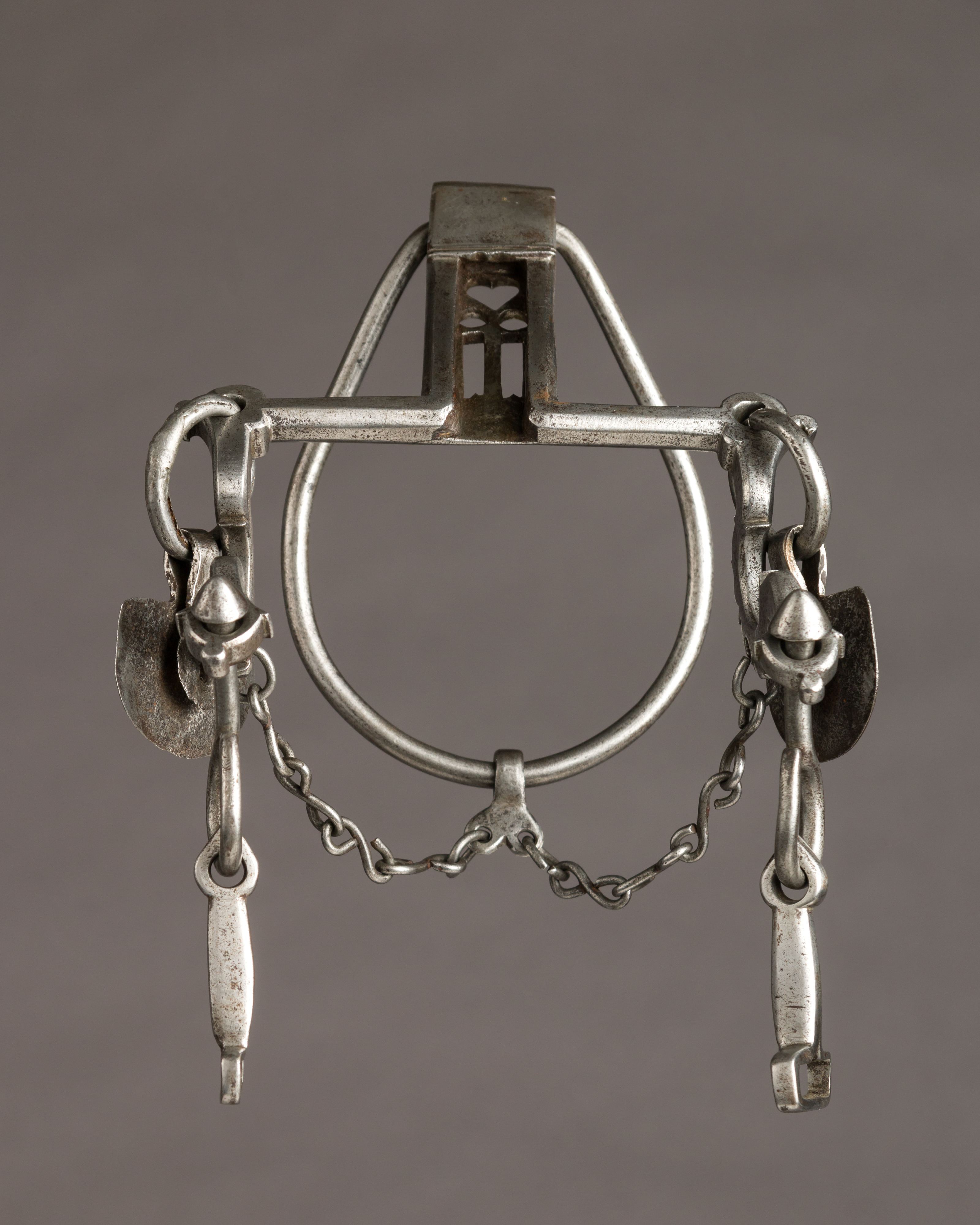Ring Bit
Not on view
The C-shaped shanks are characteristic of the ring bits made in North Africa at least since the 16th century. The T-shaped mouthpiece is pierced with a gothic window motif and a heart, a type of decoration influenced by German or Spanish ironwork, and found, for example, on some horse bits made in Tunisia during the 19th century.
The ring bit is a strong instrument distinguished by the fact that the curb chain is replaced by a ring attached at the top of the mouthpiece, going around the horse’s lower jaw. The ring would press the sensitive chin of the horse when the reins are pulled. Typical of the Islamic world, ring bits were introduced to Spain during the Arab presence, and then kept by the Spaniards for their light cavalry (used in the genette or jineta riding style). Brought into the New World during the Spanish conquest, they were also commonly used in many Latin American countries until the late 19th century.
Due to rights restrictions, this image cannot be enlarged, viewed at full screen, or downloaded.
This artwork is meant to be viewed from right to left. Scroll left to view more.



